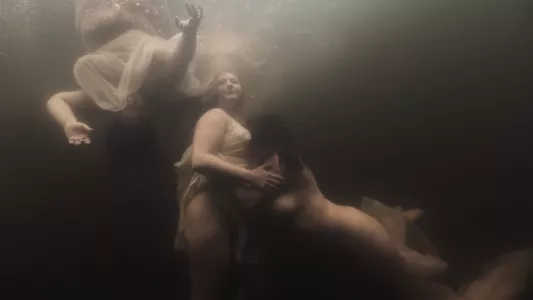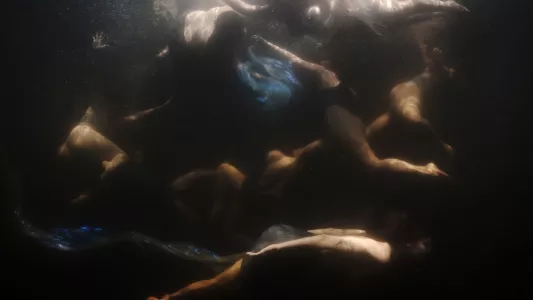Camille Ropert's (@camille_ropert) work is truly phenomenal. Graduating with a Master's degree in communication and cinema, she first produced music videos for authors and musicians Lena Deluxe, Brisa Roché, or Kosmosuna. The reason to choose the word LIMNÉES for her project was because it was the chosen name to call the nymphs who were protecting the lakes in Greek mythology. They project a fantasy mixing sensuality, desire and eroticism on one side and purity, virginity, veneration on the other. Between the 15th and 19th century, the community of Western painters, mostly masculine, imposes a unilateral vision directed by their fascination: the beauty of a woman, her hair, her diaphanous skin, her curves. They are interested in the desire she triggers, but also in their own dominance. The woman is perceived as a fragile being who is not self-sufficient. All these descriptions dating from another era have never really disappeared from the imagination collectively. They have roughly adapted to our times, she states.

After spending years training in underwater photography at sea and in swimming pools, she focused her testing in the lakes. Her first attempts reminded her of the imagery of nymphs. At the same time, she also questioned her building patterns as an individual. To feed her thinking, she drew inspiration from feminists works focusing on women's bodies, the male gaze, or patriarchal de-construction like those of Camille Froidevaux Metterie or Martine Delvaux.
The aesthetics of her images aim to take root in that of the paintings of the Renaissance and Pre-Raphaelitism. She treats the image in the manner of chiaroscuro and uses it only for a source of natural light. In a wide shot, some photographs show outstanding scenes, inspired by the paintings of Sandro Botticelli or Caravaggio. By also drawing on the work of John Waterhouse or Dante Gabriel Rossetti, she captures more intimate close-ups, enhancing the identity and uniqueness of each person.

Her challenge is to offer more contemporary content that stands out from the representations of the time. For this, she borrows and diverts strong symbolism: blood, the notion of purity, dependence on men or beauty standards. She states that feminist struggles have been marked by breaking points leading to countless violence. To support the idea that emancipation is often a difficult experience, she has introduced red biodegradable food coloring.
© CAMILLE ROPERT
She also incorporates fabrics and wigs from the same color underwater; accessories that she elevates to the rank of essential elements to progress the story. Red also reminds her of menstruation. "The symbol of the power of procreation; menstruation constitutes one of the reasons for the relegation of women to the sphere domestic, to their so-called inferior and fragile status" she states.
"With a view to break the bond of subordination of woman to man, I made the choice not to include cisgender men in the project. My role models are cisgender, transgender or non-binary people recognizing a part of femininity in them. They seek to get rid of stereotypes of their biological, social and cultural destiny which have conditioned them since birth. They have different origins, morphologies and ages. The people who choose to take part in the project feel the desire or the need to free themselves."

In 2016, Camille Ropert was the winner of the young people's contest organized by La Fondation de France and won a grant that allowed her to develop her project. The post production of her work was done at Le Fresnoy - National Contemporary Arts Studio. In 2020, her documentary film project The New Bison was selected by CNC Center National du Cinéma. She obtained a grant allowing her to develop her first feature documentary. The film is about the impact of colonialism within an indigenous community in British Columbia, Canada.
© CAMILLE ROPERT












